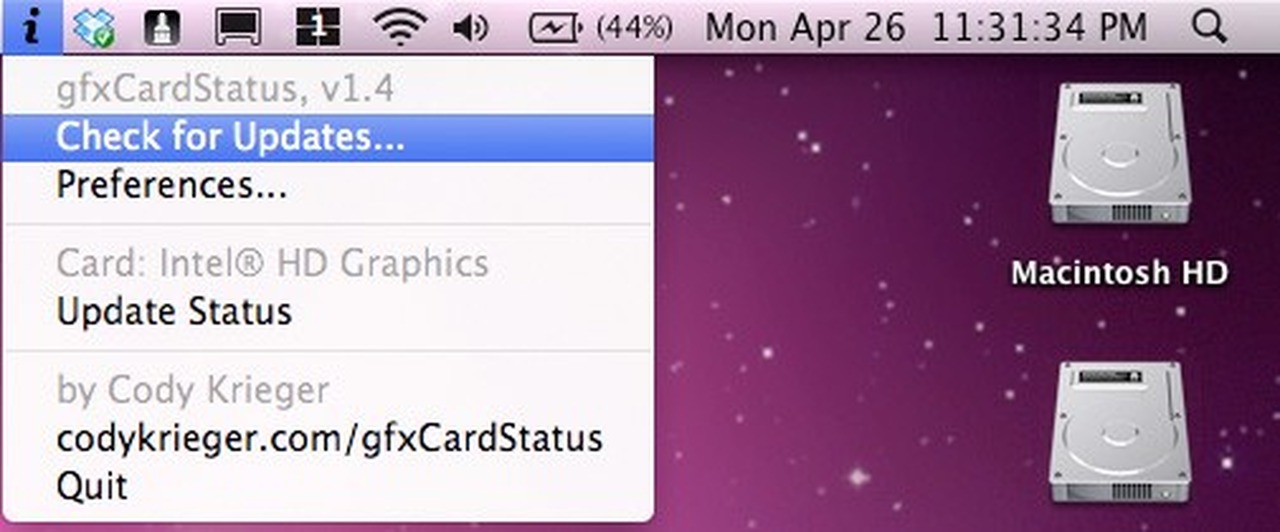

#Gfxcardstatus manual#
To sum up, gfxCardStatus offers manual control over the GPU switching modes for MacBook Pro users. Also, you cannot switch to the Integrated Only mode if there are apps in the Dependencies list. Worth mentioning is that gfxCardStatus needs to be on the Dynamic Switching mode if you want to use an external display. Identify the applications that activate the more power hungry GPU This way, you get to see if the Discrete Only mode is turned on and taking up resources without a good reason.

It is an open source application that works on Mac 10.6 and higher. Just navigate to the status bar menu and open the Dependencies lists. gfxCardStatus is a must-have app for MacBook Pro users, as it not only brings convenience in switching between installed GPU but also prevents quick battery drain by automatically switching to specified graphic card. GfxCardStatus can also help you distinguish the applications that activate the more power hungry graphics card. Consequently, the Discrete Only preset enables the graphic card that needs more power. If you opt to activate the Integrated Only mode, your MacBook Pro will go on and use the more battery-friendly graphics card. In addition, you can also choose to activate the Dynamic Switching mode, which means that the built-in macOS controller takes over. Note that the gfxCardStatus status bar icon changes depending on the currently active switching mode: i is for Integrated Only, and d represents the Discrete Only mode. Check which graphics card is active on your MacBook Pro If the system switches to one or another, you will receive alerts via the Notifications Center. GfxCardStatus resides in your status bar and provides details about the currently used GPU, together with the current power source: battery or AC. gfxCardStatus is a simple status bar menulet that enables you to manually control switching between the graphic cards. MacBook Pro models come with dual GPUs, and macOS a switching system that activates one or the other, depending on your needs.


 0 kommentar(er)
0 kommentar(er)
